1 - Expected post-Chinafy results
Does Drupal work in China?
TLDR; Drupal doesn’t work in China off-the-shelf, but it can with a bit of work. More on that later. On average, Drupal sites are 6x slower in China than they are globally, and with an average of 47% of web resources lost, rendering a broken visitor experience. This article explains why.
What is Drupal?
Drupal is one of the world’s largest open-source Content Management System (CMS).
Since launched in 2000, Drupal has risen as the go-to CMS for global enterprises with users from world’s most-visited 10,000 websites – including Pinterest, The Economist, and BBC.
What sets Drupal apart from other CMS competitors is its exceptionally high composability that makes agile workflows possible across a wide range of organisational requirements. Drupal also boasts one of the world's biggest open-source communities with 3,000+ themes and 48,000 modules (their term for “add-ons”) to offer customisability.
Behind the Drupal community are over one million active contributors.
For this reason, chances are that you’ll come across a few Drupal sites on a daily basis.
Drupal’s Global Performance
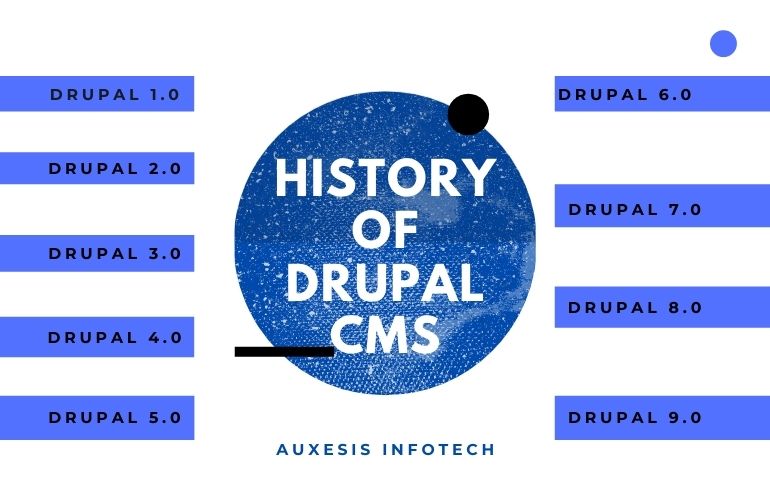
Drupal has launched 8 versions to date with 9 coming in 2022 (Source: Techbehindit)
Since its launch, Drupal’s global performance has only become better. Newer versions of Drupal such as Drupal 8 support built-in features such as the Dynamic Page Cache and Responsive Image modules to achieve more robust performance.
Drupal’s customisability also means that developers can easily integrate any Content Delivery Networks (CDN) of their choice to improve regional delivery whilst saving bandwidth.
What is a CDN? A content delivery network (CDN) is a group of servers located across various regions to cache and distribute website content for a faster delivery.
Common choices of CDN include Amazon Cloudfront, Cloudflare, and Fastly.
All great options - that is, except in China.
Drupal in China
We’ve taken a random sample of four Drupal websites and run them in China in comparison to how they load U.S:
In terms of speed, Drupal is 6x slower in China
Deliverability-wise, Drupal is missing 47% resources in China
The slowest Drupal site takes 46.4 seconds to load in China
The numbers in raw (the shorter the gap, the better):
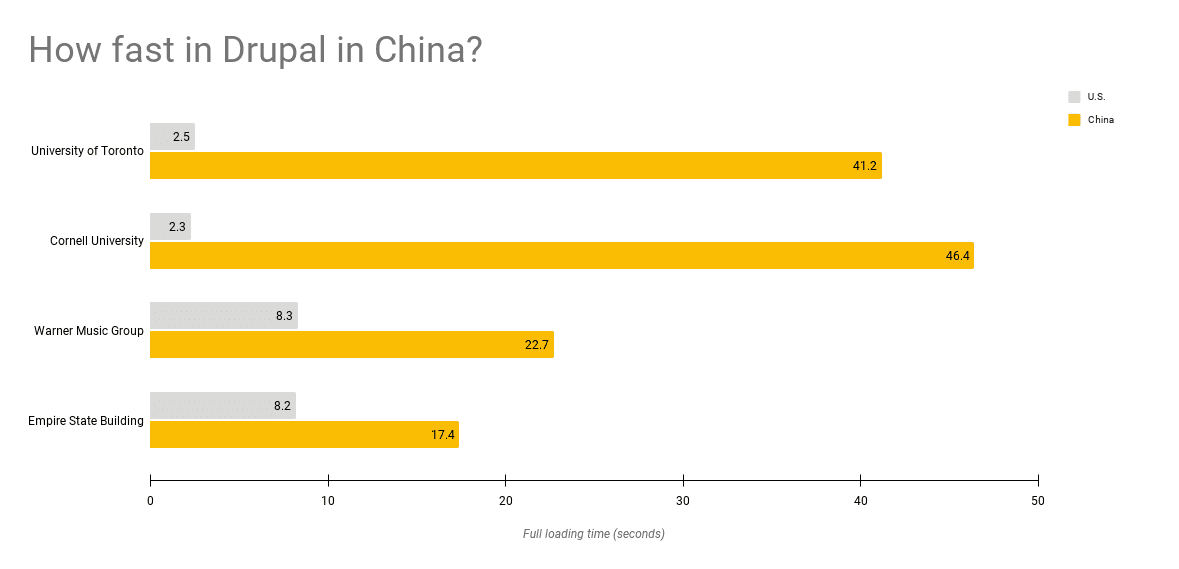
(Source: Chinafy Visual Speed Test)
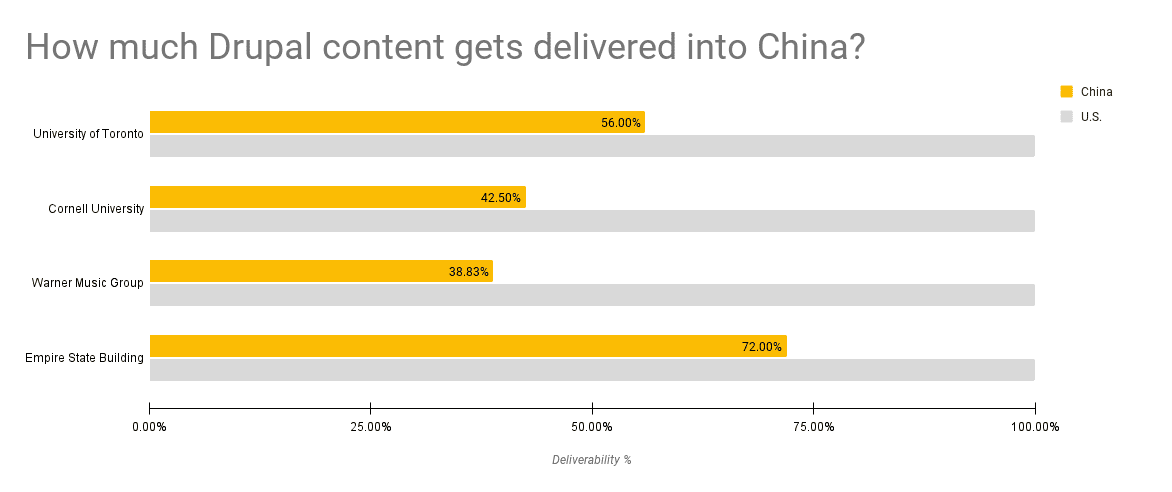
(Source: Chinafy Visual Speed Test)
Why Drupal sites don’t work in China off-the-shelf
It’s not just Drupal. All other CMS face infrastructure and code-based incompatibility which leads to poor performance in China.
i) Infrastructural issues
Truth is: most offshore sites do not have China-friendly infrastructure.
Infrastructural variables that affect China performance include choice of hosting and CDN providers.
Non-Chinese Companies reasonably tend to favor hosting their site close to where they are. In the case of U.S.-hosted sites, their server location means high latency and low throughput in data transmission across the Pacific Ocean to China, leading to a long loading time.
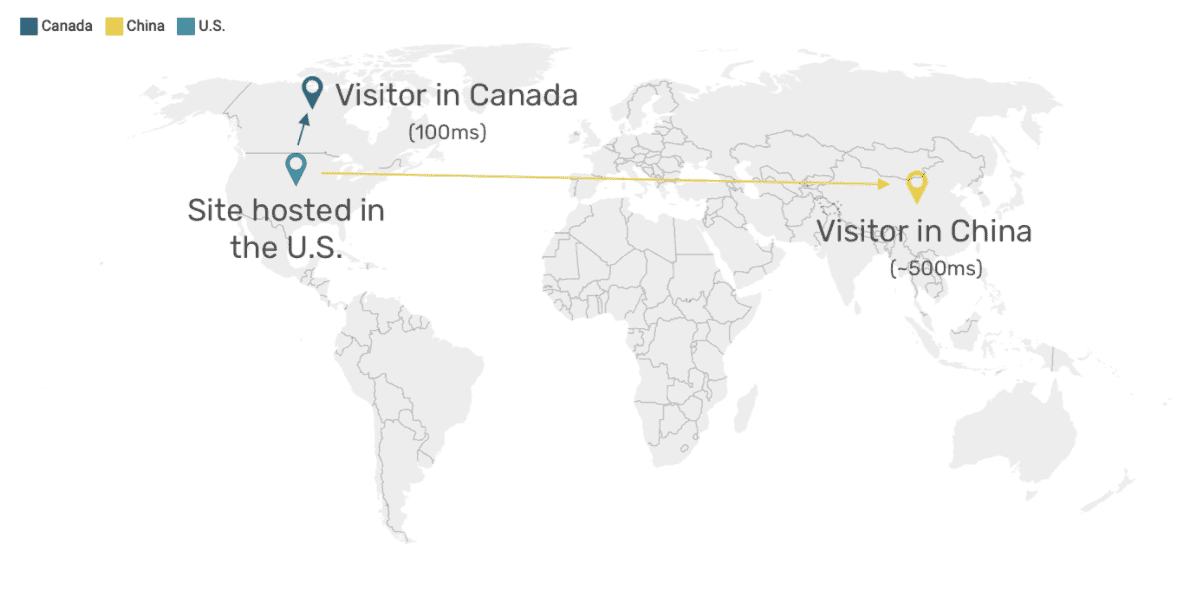
A U.S.-hosted website takes longer to deliver to China visitors than those in Canada.
One of Drupal developers’s most-liked CDN is Cloudflare (global), which is one of the best globally. But in China, Cloudflare’s global CDN is far from that.
See how Cloudflare’s non-China CDN performs against other CDNs below (in orange):
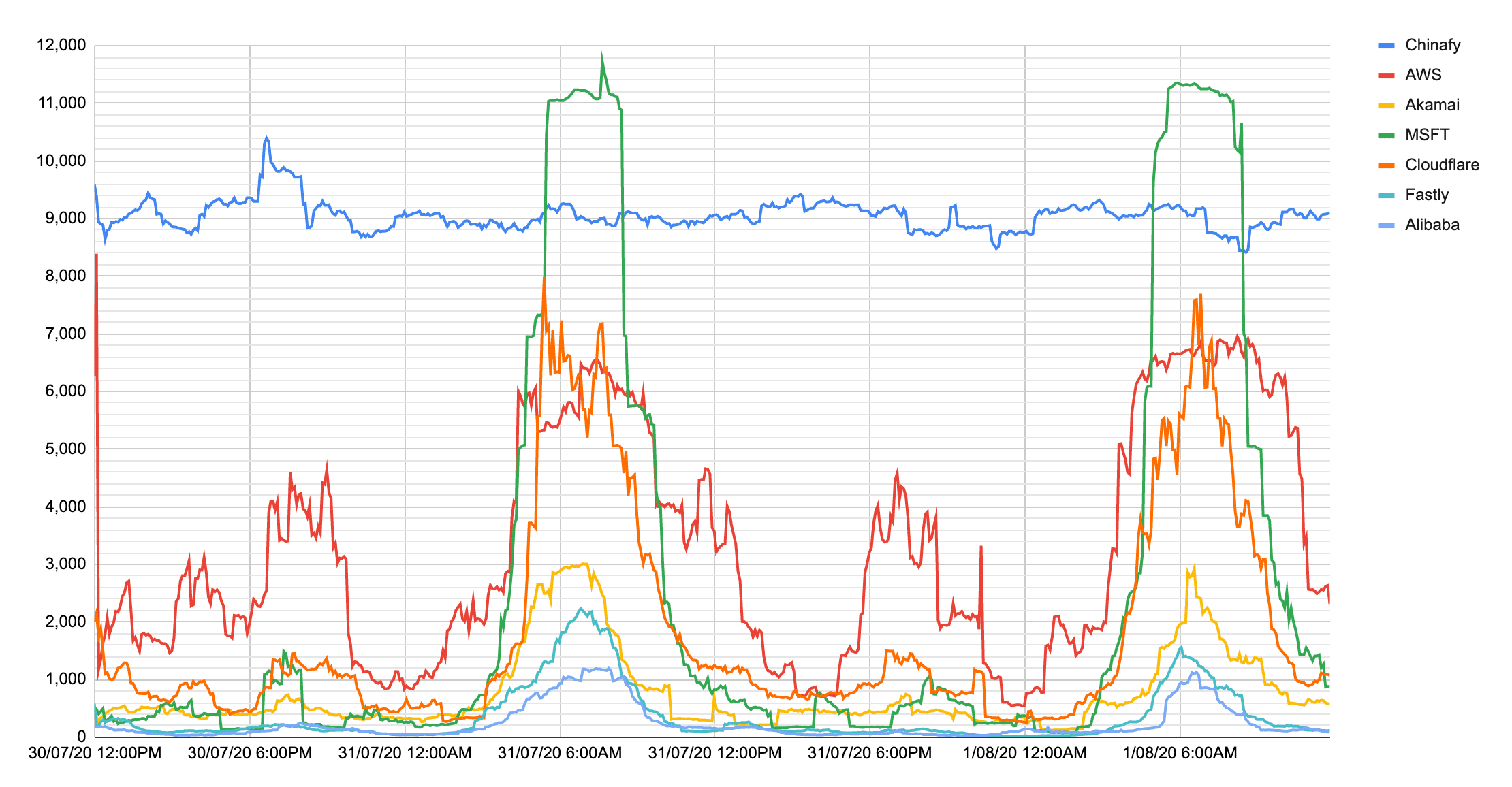
Y-axis: Bandwidth (in kbps) | X-axis: Averaged over 20-periods (Source: China CDN Considerations)
With this in mind, the natural next step is to then add a China CDN to your stack - which might help, but not fully (more on this below).
ii) Code-based incompatibility & 3rd-party resources
Common resources in the web libraries are inaccessible in China. To name but a few -
Google Map: maps.google.com
Facebook: connect.facebook.com
Vimeo player: player.vimeo.com
Chances are: >90% of Western sites cannot do without these “blocked” resources for an overall pleasant and analytics-tracked user experience. Your operations team won’t be happy if they were to be removed.
Drupal developers also leverage the world's largest directory of plugins growing by day. This means that Drupal users are more likely to deploy 3rd-party resources that are either made inaccessible or face server-related issues that are outside of a Drupal developer’s control.
These inaccessible or otherwise slow resources aggregate to stall loading Drupal websites in China.
See a waterfall chart of visitors attempting to load past “connect.facebook.com” below -
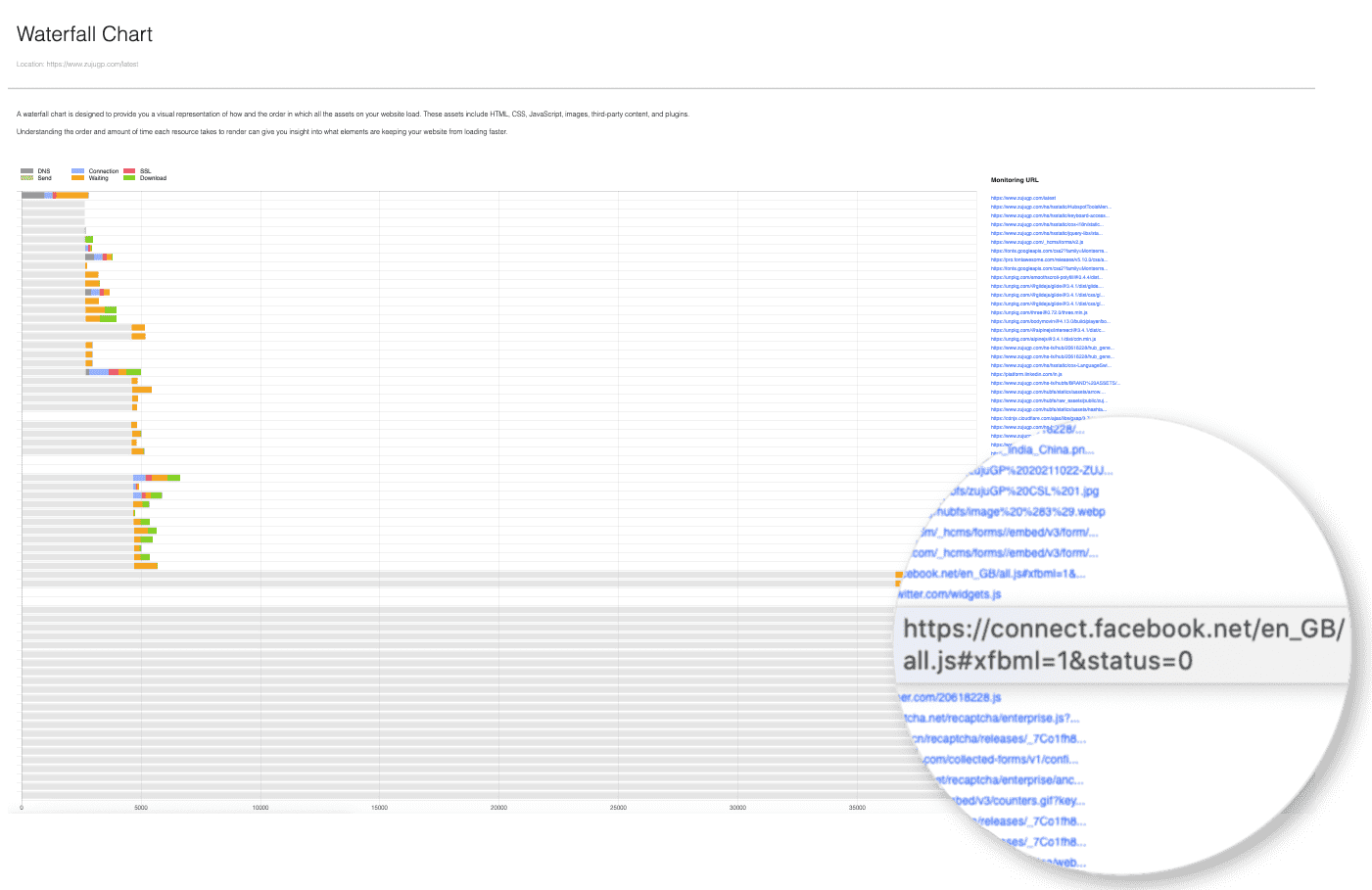
As you can see, resources after Facebook are only loaded at 35s+.
Can Drupal work well in China?
Absolutely, Drupal sites can still benefit from technical optimisation. Let’s evaluate some options and their pros and cons.
i) Host your Drupal site in China
When it comes to regional hosting, the expected steps are that you’d
Build a new site,
Get a server, and then
Host your site there.
The case for China is, however, starkly different.
For one, companies going the traditional onshore route tend to take an average of 3-4 months of website development and another 6-8 more months to become a ICP-licensed web content provider.
Secondly, common web resources (e.g. YouTube) face slow-network issues if not made inaccessible in China. You’ll need to manage a list of these resources on an ongoing basis to exclude or replace on your localised site in order to achieve and then maintain performance in China. This applies to websites onshore or otherwise.
Collectively, a fully onshore approach costs between $42K to $100K just to set it up with recurring (time) costs thereafter to manage it.
ii) Use a China CDN
As discussed earlier, China CDN can definitely deliver some forms of acceleration in China, but…
China CDNs - like all CDNs - don’t resolve or optimise any third-party, code-based incompatibility issues which means a site can still be broken, albeit faster.
iii) Chinafy
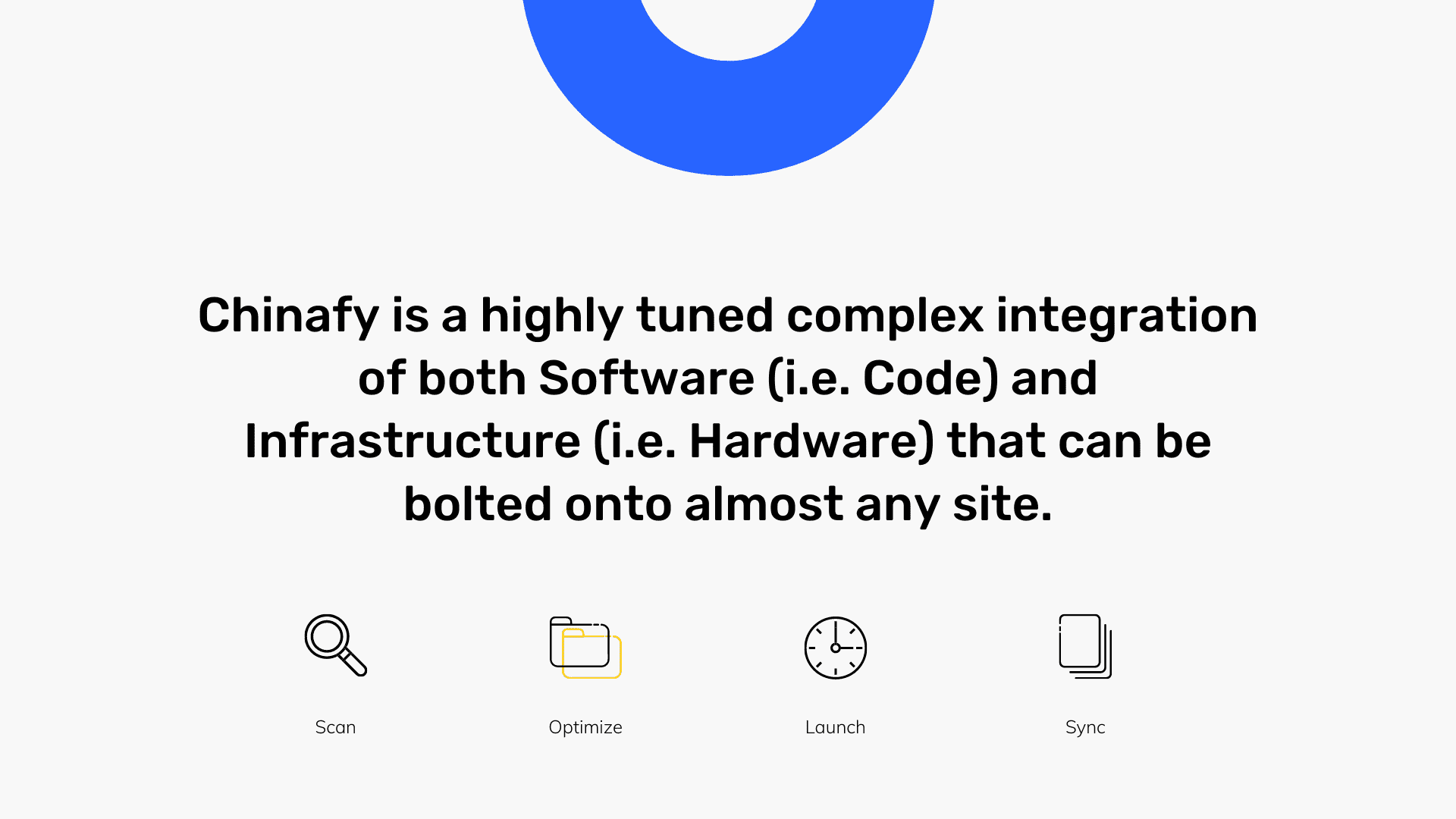
(Source: What is Chinafy)
Chinafy optimises Drupal websites to achieve virtually onshore performance with a full offshore set-up.
Specific technical actions include scanning the original site, identifying code-based incompatibility, and bolting the site onto best-in-class CDN for China delivery.
The outcome is a much faster, optimised, fully-managed version of the global site in China – ready to launch in ~2 weeks.
Case Study: Drupal x Chinafy
Let’s take Cornell University’s Drupal website as an example.
This is a before-and-after Chinafy comparison of its homepage in Beijing:
Before Chinafy (left): 45 seconds fully loaded and broken
After Chinafy (right): 2-3 seconds visually complete
? Watch how they compare from China, visually!
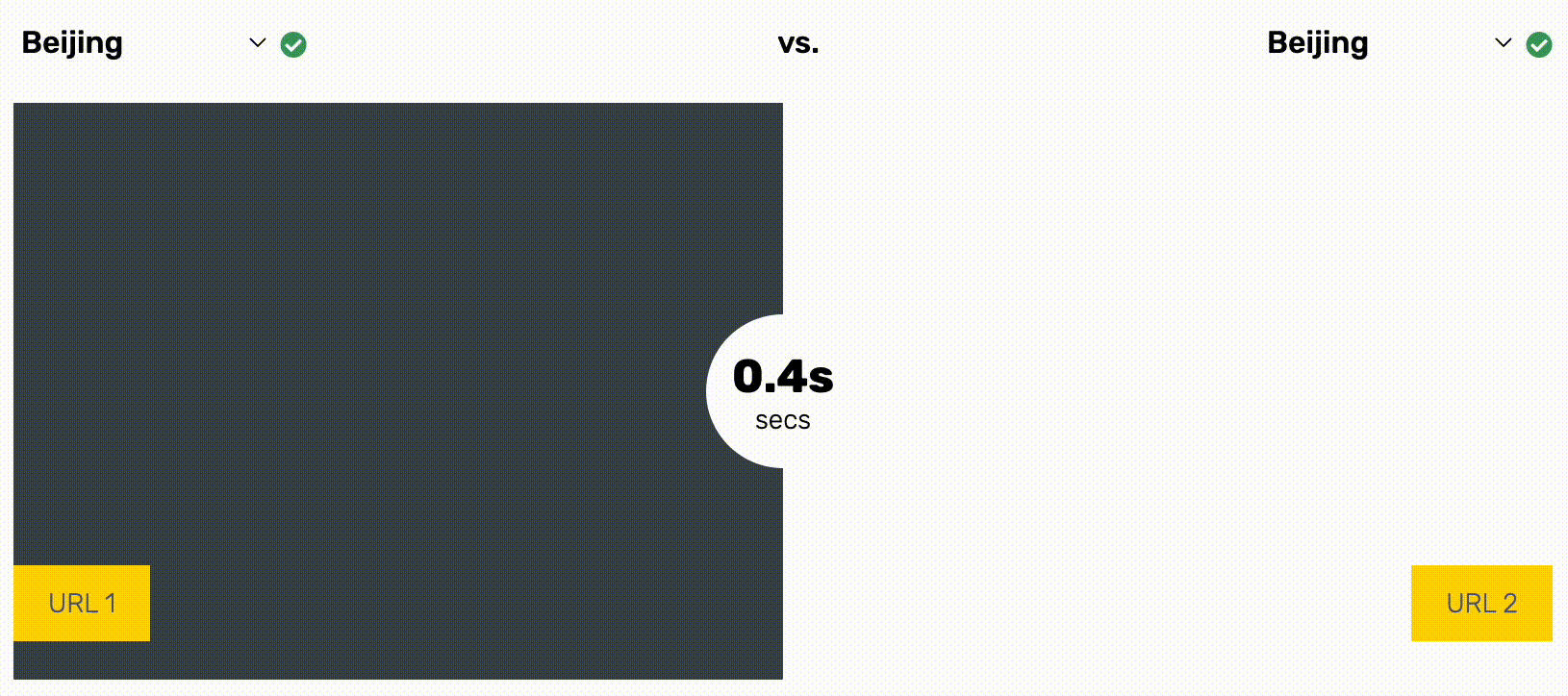
*Results are based on comparing the website as-is vs its optimised version once processed via Chinafy. Our results are 3rd-party verified via Catchpoint.
More on Chinafy, in practice? We got you covered: Chinafy Case Studies
Performance aside, Chinafy also delivers -
An optimal visitor experience (VPN-free!)
Optimisation without a separate site, local licenses, or onshore hosting
Geo-based redirection to launch Chinafy site in China with the original site remains accessible elsewhere
Automated content management to sync the Chinafy version with yours
Do you use Drupal?
Get in touch with Chinafy to make your Drupal site load faster in China



1 - Expected post-Chinafy results






























